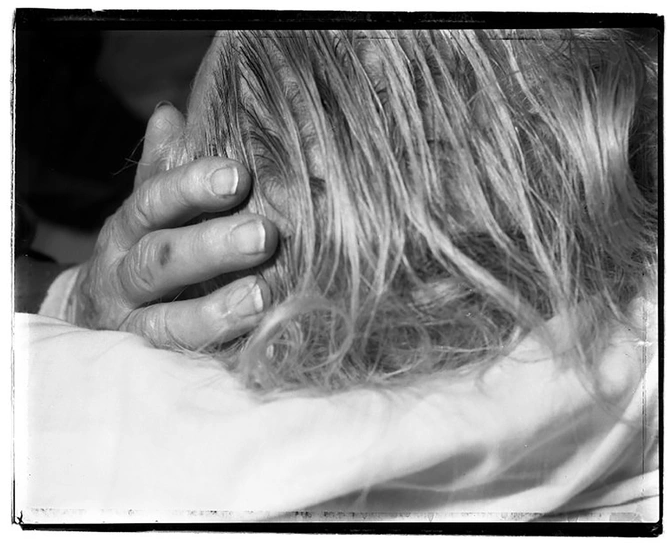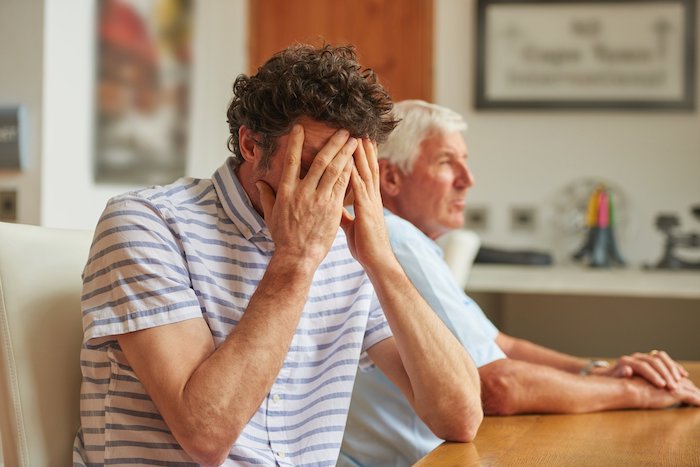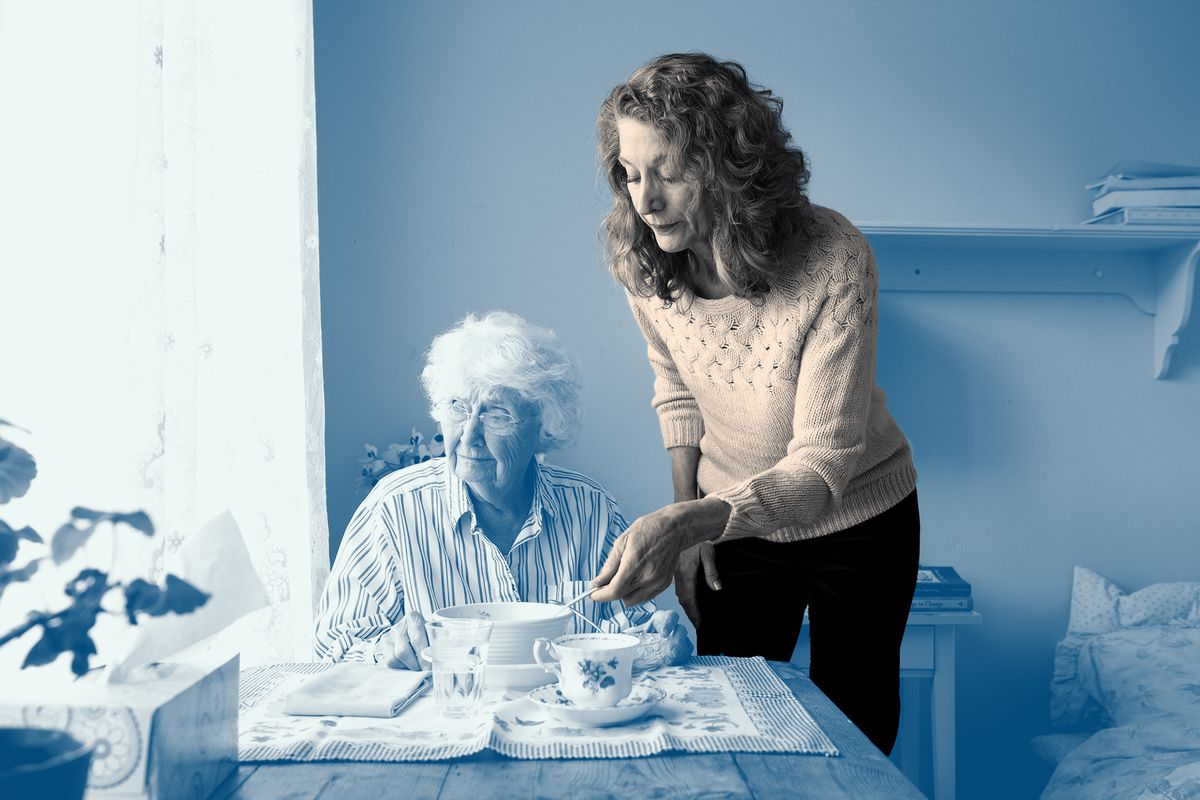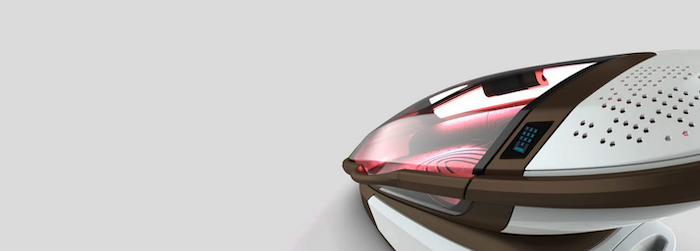A husband and wife find a way to talk to their young sons about an unspeakable event.

By Jessica Alexander
It could have been any January day — the air crisp, the sky clear. But that morning in Tokyo, where we lived then, I awoke with the same heaviness I have felt on this day since meeting my husband, Andy, nearly eight years before.
He was already out for a jog.
I pulled our 4-year-old twin boys out of bed, opened a box of crayons and told them we were going to make daddy a card. They didn’t ask why, and I didn’t tell them that it was so he would feel our warmth and affection on this day, the anniversary of the worst day of his life. They drew colorful hearts, and I wrote “We Love You” in big letters.
When Andy returned, one of our boys ran to the door, arm outstretched, proudly handing him our creation.
“Thanks guys,” Andy said with a smile, his eyes asking me: What is this for?
“Because it’s today,” I said.
“What’s today?” he asked, wiping the sweat from his forehead.
“Today. You know — ”
It hit him: This was the day that his first wife and two sons died in the Haiti earthquake 10 years earlier. His body deflated, and his face, still bright from his run, crumpled.
Then the texts began: “Thinking about you.” “Sending love.” With every buzz of his phone, he would look at me with a pleading face, as if to say: “How could all these people remember, except me?”
Of course, he never forgets. He tells me they are with him every day; I imagine their memories like a heavy blanket wrapped around his heart, keeping him warm and grounded.
He rationalized that his slip of the mind that day honored who they were, because they wouldn’t want him to still tear up at the sound of children’s laughter, to still be vacillating between sorrow, anger and emptiness.
“Forgetting” also meant he was present in a way that was once unimaginable — waking up without dread, going for a carefree run, sitting down for toast and eggs with his family.
Our boys didn’t know about Andy’s past. He and I met two years after the earthquake when our work overlapped. In time, Andy and I fell in love, married and had twin sons. As the boys turned 3, then 4, I found myself searching online, “What is the right age to talk to children about death?”
I wondered when they would ask about the other two boys in framed photos on our bookshelves or recognize them on their grandmother’s refrigerator — the pictures that didn’t change with each new baseball season or dance recital like those of the other grandchildren. Those two faces never grow up.
When I looked at my sons — at their baby teeth smiles and wrists still pudgy with baby fat — I could only guess at who they would be years from now. Andy often wondered the same about his first boys. One recent August marked when the eldest, Evan, would have turned 18. Would he be headed off to college? How would his voice sound?
That August afternoon, we had just finished eating lunch next to a lake near our home when Andy turned to me and said, “I’m going to tell them.”
I felt anxious, not knowing how the boys would take it, but also reassured by Andy’s calm. We got up and started walking along the edge of the lake when Andy stopped and said, “Boys, I have something to tell you.”
They loved his stories and ran to him, each grabbing a hand.
“Many years ago,” he said, “when I was working in a country called Haiti, I lived with my two sons and their mom. My sons were just about your age — Baptiste was almost 5, and Evan was 7. Today is Evan’s birthday actually; he would have been 18. One day, there was a big earthquake.” He explained what an earthquake was, tectonic plates and all. “I was at work and Evan, Baptiste and their mom, Laurence, my wife before your mommy, were at home.”
When the shaking started, Andy explained, they couldn’t make it out of the building before it collapsed, and the three of them died.
I tensed to see if the boys would be scared or surprised, or if it would even register.
“What does collapse mean?” one asked.
“Look there’s a fish!” said the other, pointing.
Andy carefully answered all their questions, then took a deep breath and said, “Let’s go for a swim.”
We put on bathing suits and hopped into the cold water, the boys splashing behind rocks and laughing. They didn’t seem to absorb the gravity of the loss, or how brave their father was. It probably struck them as just another story.
Back home, we took the photos of Evan, Baptiste and Laurence from our shelves, introducing the boys to the faces they had always seen around the apartment. In the coming weeks, Andy shared details about them that I realized he had been carrying alone this whole time.
Soon Andy began working memories of his first family into our everyday lives. “Evan and Baptiste loved this book,” he would say before settling in for a bedtime story that he had read our boys countless times. Or as we gathered on the couch to watch a movie, he would tell us that this was Evan and Baptiste’s favorite.
“Did they get scared too?” one of the twins asked.
“Sure they did.”
One summer evening as we walked home from the park, the boys tugged excitedly at our hands, pulling us this way and that, until Andy pulled his hand away from their incessant yanking. Then he immediately flinched and put his hand out again, later saying to me, “I get so mad at myself for doing that.”
“Why?”
“Because I would give anything to hold their hands again.”
As in that instance, I sometimes overlook how his interactions with us are shaped by regret over things he wishes he had done differently, and his sorrow over things he wishes he still could do. But they are also shaped by the realization that today he has another chance.
I often think about Andy’s former wife — I am older than she was when she died at 40 — and how she was robbed of so much life. It shouldn’t have surprised me when the boys did the same about their half brothers.
After losing his first tooth, one of the twins asked, “Did Baptiste ever lose a tooth?” And they would tell their friends over lunch about how Evan pronounced butter “buller.” When they turned 5, they wanted to know if Baptiste ever had a 5th birthday party, and they began asking more often for details about what happened, trying to understand. But so much of what happened isn’t understandable.
“Why did your house break, Daddy?”
“Why were they at home and you weren’t?”
“Why didn’t your office fall down?”
These questions had haunted Andy for years, but when they come from the mouths of his innocently curious children, he tells me that he can face them more easily, which has helped relieve his lingering guilt. One day they may ask about his despair, and perhaps he will explain the many dimensions of his grief. For now, getting through the facts is enough.
One morning after one of the boys’ friends slept over, we all sat down for pancakes when the friend noticed a framed picture of Evan and Baptiste on a seesaw and said, “When were you there?”
“That’s not us,” one of the twins said. “That’s Daddy’s other sons, Evan and Baptiste. They died in the earthquake in Haiti when their building fell on them.”
“Oh, like when the bear got smushed by the rocks in that cartoon,” the friend said. He was only 5 — what other reference could he possibly have?
“It’s not a cartoon,” our son said. “It was real. And it’s not funny.”
I had thought the gravity was lost on him and his brother, but he understood. And for the first time, Andy didn’t have to take a deep breath and muster the strength to tell the story yet again. His son had done it for him.
This year, the night before the earthquake anniversary, Andy was feeling low, his attention elsewhere while cooking dinner.
“What’s wrong, Daddy?” asked our older twin.
“Tomorrow is the anniversary of the earthquake,” he said. “So I’m thinking of Baptiste, Evan and Laurence.”
“Tomorrow there will be an earthquake?”
“No baby, tomorrow’s just the anniversary. And I’m sad.”
“Oh,” our son said, then quickly added, “But lucky too, Daddy.”
Andy looked up. “Lucky?”
“Lucky you found us.” His voice was high and his head tilted, as if asking.
Andy looked at me with disbelief. Our boy might not have understood the meaning of an anniversary, but he could comprehend the idea of renewal.
Andy scooped him up in his arms. “Yes, my boy,” he said. “I am the luckiest.”
Complete Article ↪HERE↩!










